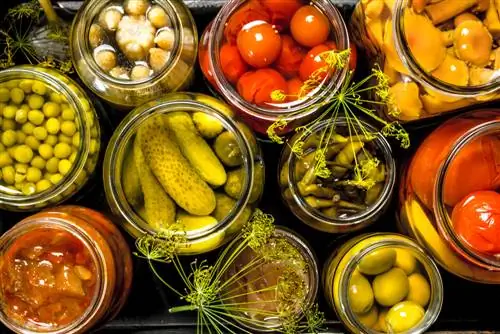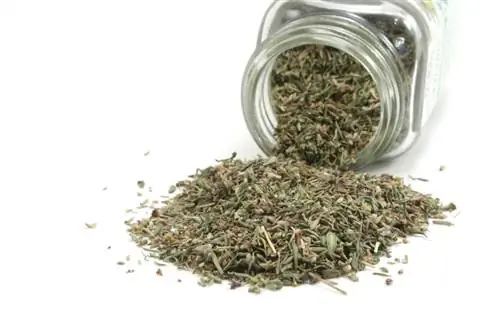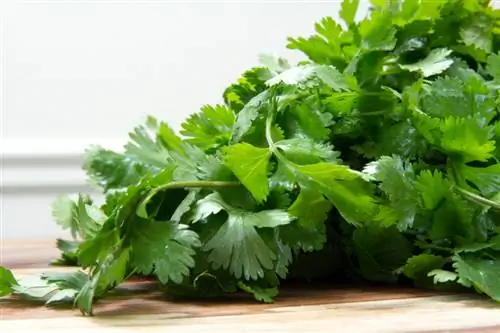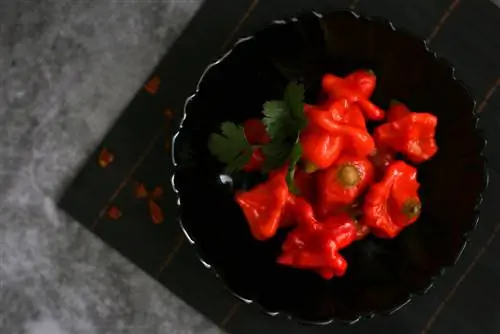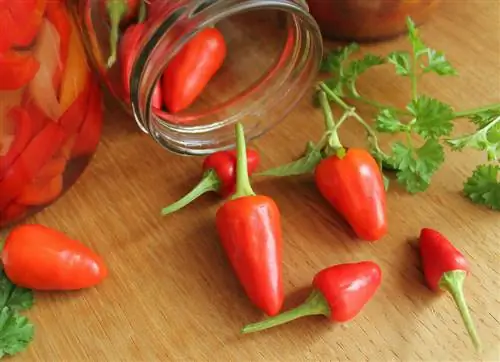- Author admin [email protected].
- Public 2023-12-16 16:46.
- Last modified 2025-01-23 11:22.
Garden owners certainly know it: the zucchini seem to be exploding, at the same time the first beans are ripening and the tomato harvest is exceeding all expectations. To prevent the vegetables from spoiling, you can preserve them and create winter supplies yourself. There are various methods for this, which we would like to briefly introduce to you in the following article.
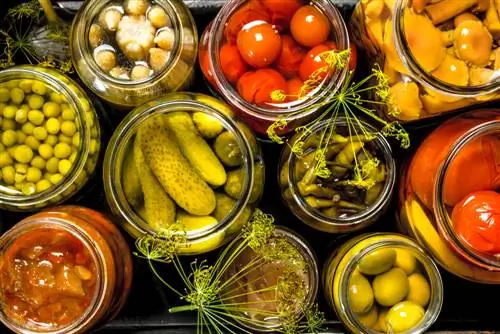
How to preserve vegetables?
To preserve vegetables, you can use various methods: boiling and canning, freezing, drying, pickling or fermenting. Make sure your working conditions are clean and use flawless fruit or vegetables.
1. Preserving and canning
In these processes, food filled into jars is sterilized using heat. This renders microorganisms that would lead to spoilage harmless.
A distinction must be made between preserving and canning:
- WhenPreserving, the food is layered in the glass, poured over with a broth or syrup and cooked in the preserving pot or oven. The heat causes the air in the glass to expand. When it cools down, it contracts again and a vacuum is created that seals the containers airtight.
- WhenCanning, food, such as jam, is filled into jars while they are boiling hot and then sealed without heating them again. This only works if the preserve has a high sugar or acid content.
2. Freeze
When frozen, almost all of the he althy ingredients are preserved. For storage, the vegetables are cleaned, chopped and, depending on the variety, briefly blanched. You can then freeze it in portions in containers or special freezer bags.
3. Drying
This process has been used to preserve food for thousands of years. A classic is dried tomatoes, zucchini or apple rings. During drying, the liquid is almost completely removed from the food, so that mold and rot no longer find a breeding ground.
Vegetables and fruits you can:
- In the air,
- in the dehydrator,
- or in the oven
dry.
4. Insert
You can preserve vegetables such as peppers, onions or celery by pickling them. The classic food preserved in this way is probably the sour cucumber, which is a must for every snack.
The process is very simple: the vegetables are layered in a glass and a hot or cold broth is poured over them. Stored in a dark and cool place, the pickled foods last for many months.
Fermentation
You are probably familiar with lactic acid fermentation from the popular sauerkraut:
- The cabbage is cut into thin strips with a cabbage slicer.
- An earthenware pot is lined with cabbage leaves.
- A few centimeters of shredded cabbage are placed inside and pounded with a wooden masher until juice comes out.
- A s alt and spice mixture is sprinkled over it and a new layer of cabbage is poured in.
- Again it is mashed and seasoned.
- Finally, cover everything with cabbage leaves, put the lid on and weigh it down.
- The herb ferments within three to six weeks in a cool cellar.
Tip
For all preservation methods, only flawless fruit and vegetables should be used. Cleanliness is the top priority, as introduced germs cause food to spoil very quickly.

